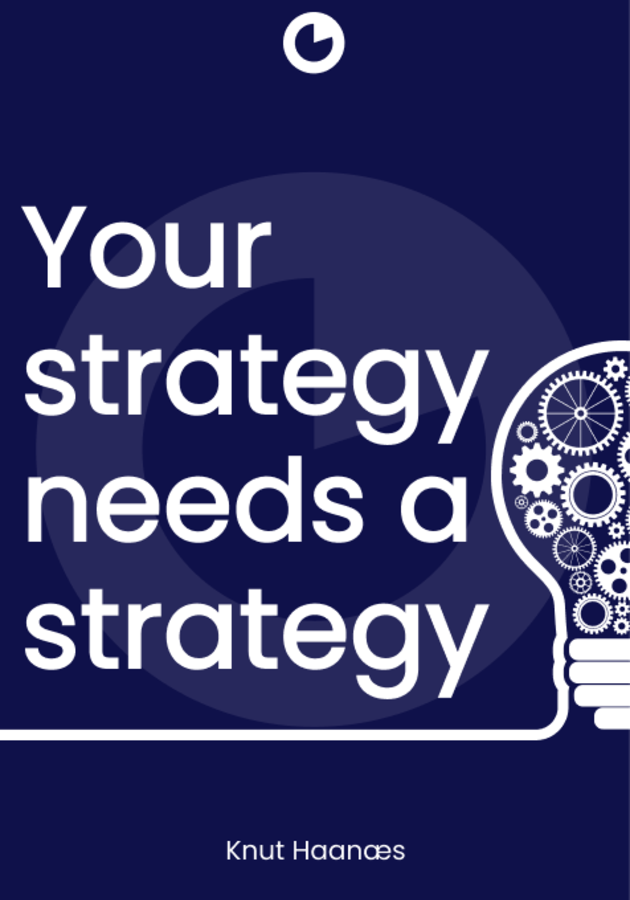The book introduces five essential business strategies: Classical, Adaptive, Visionary, Shaping, and Renewal, based on a detailed five-year examination of many different companies. By categorizing organizations into these archetypes, the authors present recommendations and a set of questions to help CEOs identify the best strategy for their situation.
The main idea of the book is to address the challenges posed by the dynamic and diverse nature of modern business environments, as well as the multitude of strategic approaches available. The authors suggest a unified option framework known as the "strategy palette," which helps leaders in selecting the best tactics for their specific situations.
The importance of adaptive strategies in business success
In the book's opening, the authors highlight that corporate success is dependent on organizations adapting their plans to evolving circumstances. The study emphasizes that all majorly successful organizations have implemented personalized strategies across multiple areas of their operations. This includes being aware of market trends and finding gaps that necessitate inventive solutions.
The authors explore the various obstacles that businessmen and young managers face when developing and implementing strategies, finding that "even your strategy needs a strategy." Drawing on survey results from hundreds of international corporations, the authors examine the performance data of prominent US companies through research and CEO interviews.
The primary lessons emphasize the importance of a diverse business environment, appreciating everyone's contributions, and leadership focused on smoothly executing these ideas to improve corporate performance. The authors describe five joint strategy implementation approaches: the classical approach, suitable for stable industries involving analysis, planning, and execution; the adaptive approach, pivotal in highly unpredictable industries where experimentation and scaling reign supreme; the visionary approach, centered on creating new industries by envisioning possibilities; the shaping approach, which collaboratively reshapes industries through ecosystem-based strategies; and renewal strategies, essential when companies lose alignment with their competitive environment, demanding early anticipation, resource allocation, and a growth and innovation focus.
A prevalent strategic mistake lies in underestimating the unpredictability and uncontrollability of business environments, often leading companies to become trapped in singular approaches like the classical method, unsuitable for fast-paced industries. Ultimately, successful companies share standard capabilities such as adaptability, shaping external factors, and ambidexterity.
The pitfalls of singular strategy in corporate environments
The authors focus on the complexities of handling the obstacles and traps encountered in corporate settings. Their research focuses mostly on how businesses perceive their environment and the methods they employ in response. What they discovered is a common human inclination to see corporate settings as more predictable and controllable than they actually are. There's a comfortable appeal in assuming that you can control and predict your surroundings, but reality frequently proves otherwise.
Another big problem is becoming too fixated on a single strategy. Frequently, this is shown in the traditional process of evaluating, planning, and executing. While this strategy has its advantages in some situations, it fails to meet the needs of rapidly changing businesses. Such restrictive techniques are especially unsuitable in rapidly changing industries.
Successful multinational organizations contain certain essential traits required to thrive in dynamic situations. These capabilities include flexibility, sculpting, and ambidexterity. Adaptability requires developing a culture of disciplined experimentation, complete with reliable metrics to determine effectiveness and return on investment. Managers have an important duty to encourage people to take prudent risks and pursue new opportunities.
Shaping, on the other hand, centers on an outward-facing perspective. Instead of being inwardly focused, businesses must incessantly watch external issues such as technical breakthroughs, changes in customer behavior, disruptive market entrants, and regulatory changes. This high awareness is the foundation of a strategy plan for proactively changing the external landscape.
Ambidexterity emerges as an important attribute for large businesses, requiring the simultaneous implementation of many strategies across various organizational segments. To remain competitive in fast-moving industries such as digital technology, organizations must use either shaping or adaptive tactics. More stable sectors, such as printing, tend to embrace traditional tactics.
Assessing market stability and technological changes
Through the example of Mars Inc., the authors highlight the importance of adapting production to the scale and capabilities of the market. To be a successful leader, it is important to pay attention to the efficiency and economy of production, but of course, those aspects should not be crucial. Here, they point out that this corporation is working on several strategies that include analyzing the markets, monitoring their stability, and focusing on driving growth and profitability. Their organizational structure is simple and includes various planning processes. Mars Inc. strictly adheres to principles such as quality, responsibility, mutuality, efficiency, and freedom in its operations.
Most private companies do not focus on long-term strategies; instead, they are more interested in profit in the short term. Mars focuses on not being limited by quarterly reporting cycles and invests in incremental innovation to maintain its competitive edge in the market. This is an example of a classic strategy that prioritizes volume and differentiation of superior traits. The authors also compare leading companies in the market from other industries, such as UPS and FedEx, which are some of the main examples of leaders who adhere to classical strategies.
Implementing this classic approach is safe because it is specially created for stable and predictable markets with established competition. But it is essential for these companies to first assess the volatility of stability, growth rates, technological changes, and regulatory environments before deciding to implement this classic approach. The authors share a detailed picture of how this so-called classical strategy process works. It includes an analysis of market attractiveness, the basis of competition, and competitive positioning to determine where and how to compete effectively.
Next, the authors share examples through research excerpts of companies such as Quintiles and Huawei that have successfully positioned themselves in their industries to achieve a competitive advantage. They re-emphasize the importance of monitoring market stability, volume, and demand and what potential scenarios would occur if they change.
The biggest impact on business performance comes from cultivating a winning culture
The major industrial company Mahindra uses different strategies in different parts of its business. Here, the authors refer again to the importance of implementing special strategies in each segment of the company's operations to approach market demand from aspects that will satisfy every need. Mahindra focuses on specific niches in one area, considering the yearly demands. On the other hand, the pharmaceutical company Mylan plans its strategy beforehand through a deep market analysis. Their goal is to grow steadily by understanding changes in healthcare and striving to be prepared for different situations. Their planning process involves detailed analysis and encourages deep consideration and discussion of proposed ideas. They make short-term and long-term plans to protect their core business and research holes in the market and new untapped opportunities they can exploit.
The authors emphasize that when a company creates a plan, it is not enough that it exists but the way in which it will be implemented is also quite important. This includes setting clear and realistic goals, creating action plans to achieve them, and devising alternative plans in case of failure, so companies need to adjust their strategies if circumstances change unexpectedly. Key elements in planning and execution are gathering information that will enable the company to make a detailed plan and monitoring progress and innovations that will help the company remain competitive.
The dominant culture inside companies considerably impacts the effectiveness of plan implementation. The degree of collaboration and mutual cooperation directly impacts the achievement of goals. In these chapters, the authors show how different companies approach planning and executing strategies to achieve their goals in the business world. Using the example of Pfizer, a pharmaceutical company, they highlight how a strong culture based on discipline, accountability, clarity, and focus can lead to significant improvements in performance.
Importance of speed, flexibility, and adaptability
Leadership is crucial in upholding focus and execution within the traditional company. The CEO is responsible for creating high-level objectives, supervising the development of detailed strategies, and assuring unflinching commitment to execution. Walmart founder Sam Walton is cited as an example of a leader who combined focus with openness to change, which helped Walmart innovate and maintain its competitive position.
The authors focus on the essential elements of a successful classic strategy and the CEOs' role in implementing and preventing common pitfalls to avoid, as well as prioritizing short-term metrics over long-term goals. They emphasize, in particular, the concept of an adaptive approach to strategy characterized by rapid adaptation to predictable and changing environments. Through the example of Tata Consultancy Services, they point out how they managed to stay at the top of the competitive position by continuously developing and responding to customers' needs.
Through the example of the Spanish fashion retailer Zara, the authors highlight the influence of speed and flexibility. Unlike big fashion retailers that try to predict customer preferences, Zara reacts quickly to what customers buy. They achieve this by shortening the supply chain and producing small batches of each style. In industries with unpredictable trends, it is crucial to be fast and adaptable to achieve higher profits and better customer satisfaction.
Zara's success comes precisely from its quick response to changing customer preferences. Companies must adapt to environmental changes by vigilantly monitoring demand and experimenting with new ideas. They emphasize the importance of sensing change and taking proactive steps to innovate quickly to achieve success.
An adaptive culture is externally oriented, means-focused, open, and playful. It encourages diversity of perspectives, constructive dissent, and individual creativity. Adaptive leaders set context rather than goals, fostering an externally oriented, experimentation-friendly culture.
William McKnight's principles at 3M emphasize delegation, tolerance for mistakes, and platforms for sharing ideas. A successful adaptive strategy requires continuous, disciplined execution of signal-guided, iterative experimentation.
Key elements include Capturing change signals, creating a portfolio of options, selecting and scaling successful experiments, and iterating rapidly.
Companies often acknowledge the importance of adaptive approaches but lack sufficient knowledge or experience to operationalize them effectively.
Acting fast, communicating bold visions, and shaping markets
Dennis Gillings founded Quintiles Transnational in 1982 with the goal of offering better and more efficient services to pharmaceutical companies performing clinical studies. He recognized an opportunity to extend the business abroad and into medication development. Gillings' secret to success was his ability to act fast, make strategic decisions, and persevere in adversity. Quintiles is now the world's leading provider of pharmaceutical development and commercial outsourcing services.
Anne Wojcicki launched 23andMe in 2006 to transform healthcare by giving people access to their genetic information. She saw an opportunity to combine biotechnology and information technology advances to supply consumers with customized genetic testing. Wojcicki's timing was crucial as advances in DNA sequencing technology made it possible to provide genetic testing to the general public at a reasonable cost. Despite encountering obstacles and regulatory impediments, Wojcicki is still committed to using big data to improve healthcare outcomes.
Through these examples, the main message that the authors want to share with readers is that visionary entrepreneurs have a natural ability to identify new opportunities, create bold visions, and be persistent in achieving goals when faced with the challenges of bringing about transformative change. Time is always hostile, and successful visionary approaches include being the first to capitalize on new trends or technologies. Visionary strategies require flexibility in execution while remaining focused on the ultimate goal. Companies can realize their goals by implementing an innovative strategy approach, communicating a bold vision, acting quickly, and shaping the market.
Sharing this vision effectively with customers, investors, and employees is also particularly important. It is necessary to communicate clearly to gain acceptance and support. Companies can inspire and educate others about their vision by celebrating early successes and tailoring the message to different audiences.
On the other hand, a simulation strategy in a predictable environment can help companies shape the market. It is essential to identify opportunities and invest to create better value. Visionary leaders should pursue strategic options that can yield high returns.
Cooperation as the key to industry shaping
Companies adopting the visionary approach must be aware of potential pitfalls that can lead to serious problems. The authors suggest paying particular attention to timing, clear communication, and flexibility, warning against misguided visions and perceptions that may overestimate the predictability of the environment. They emphasize the importance of having a bold vision, acting quickly, and shaping the market to effectively leverage the challenges and achieve success in a rapidly changing business landscape.
Through the example of the "Shaping Approach to Strategy," they advise how companies can shape the industrial scene. The "Shaping Approach to Strategy" is like an artist creating a mural with many other artists. In this case, the mural represents a new industry or market that hasn't been fully formed yet. The main idea is that sometimes, a company has the unique opportunity to shape or redefine an industry when it's still young and flexible. This opportunity arises when there are no set rules yet, and the industry has the potential to become big and attractive. However, shaping an industry requires collaboration because no company can do it alone.
This leads to the conclusion that cooperation is still vital. To shape the industry successfully, it is necessary to take risks and have sufficient resources and capabilities. The reality is that no single company can shape an industry alone. Any early-stage industry is unpredictable, so firms need to be flexible and adaptable to succeed. Success comes from creating a shared vision and building a platform where stakeholders can collaborate. The ecosystem must evolve to scale and remain flexible to market changes. Shaping strategies must be applied at the right time when there is an opportunity to influence the direction of the industry, and companies must take advantage of this promptly. Successful cooperation, mutual understanding, and shared interests are essential.
Companies should focus on building platforms that facilitate interaction, reduce transaction costs, and provide feedback mechanisms. Successful platforms create value by maximizing network effects and monetizing services. Ultimately, the authors discuss that companies must continuously invest in research and design options to stay ahead in unpredictable environments.
Final notes
Do you really know if your strategy will lead to success?
Business leaders are bombarded with different ideas and practices on how to gain an edge in the market. Should you focus on being big or being fast? Should you aim for innovation or stability? With the business landscape changing rapidly, it's crucial but challenging to pick the right strategy.
In their book, "Strategy Beyond the Hockey Stick," authors Martin Reeves, Knut Haanæs, and Janmejaya Sinha provide a straightforward method to determine your company's best strategy. They help you assess your business environment to understand its unpredictability, your ability to influence it, and its competitiveness.
The book addresses common strategic challenges such as dealing with outdated planning cycles, seizing opportunities, and managing different strategies across various business units and locations. It's a practical guide to help you navigate the business world effectively.
12min tip
Are you tired of dealing with persistent pain, unexplained allergies, digestive issues, headaches, fatigue, or feeling emotionally out of balance? "Chakra Healing" by Margarita Alcantara shows the pathway to becoming a happier, healthier you.





























